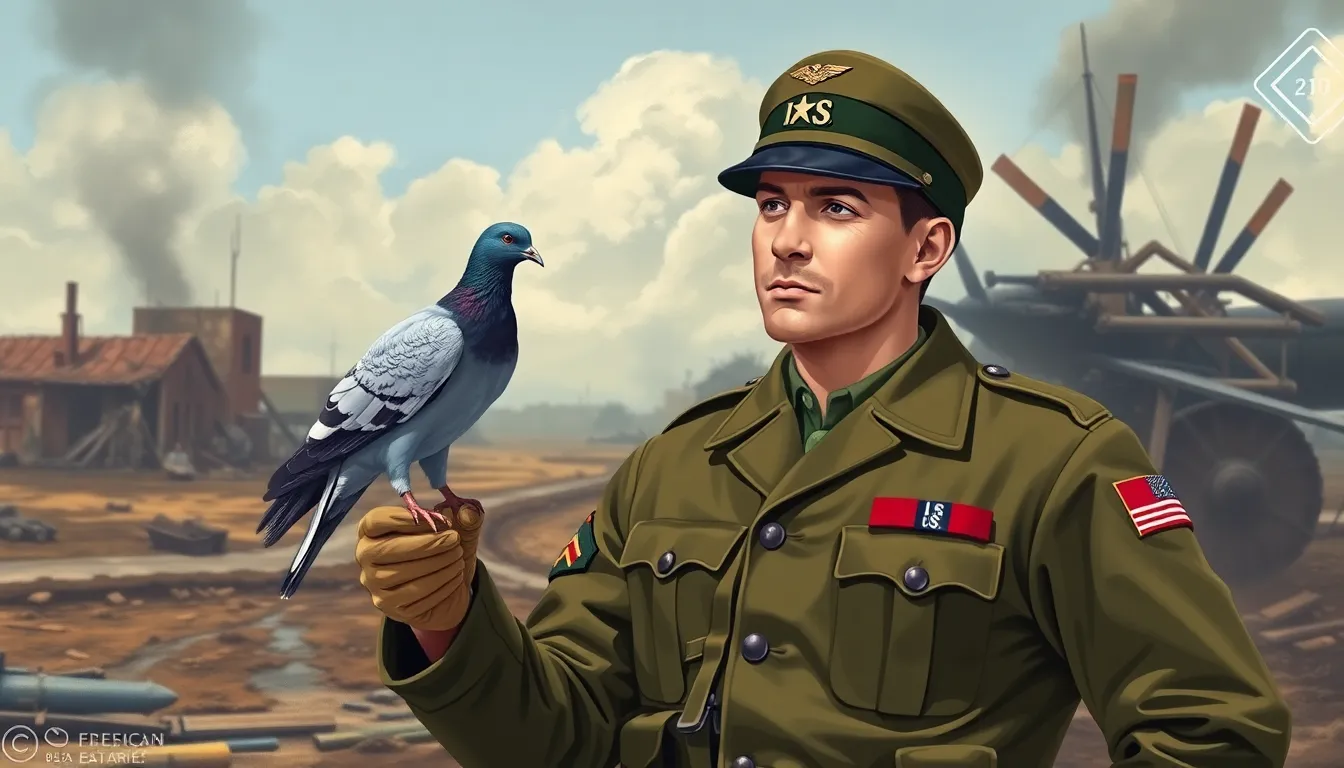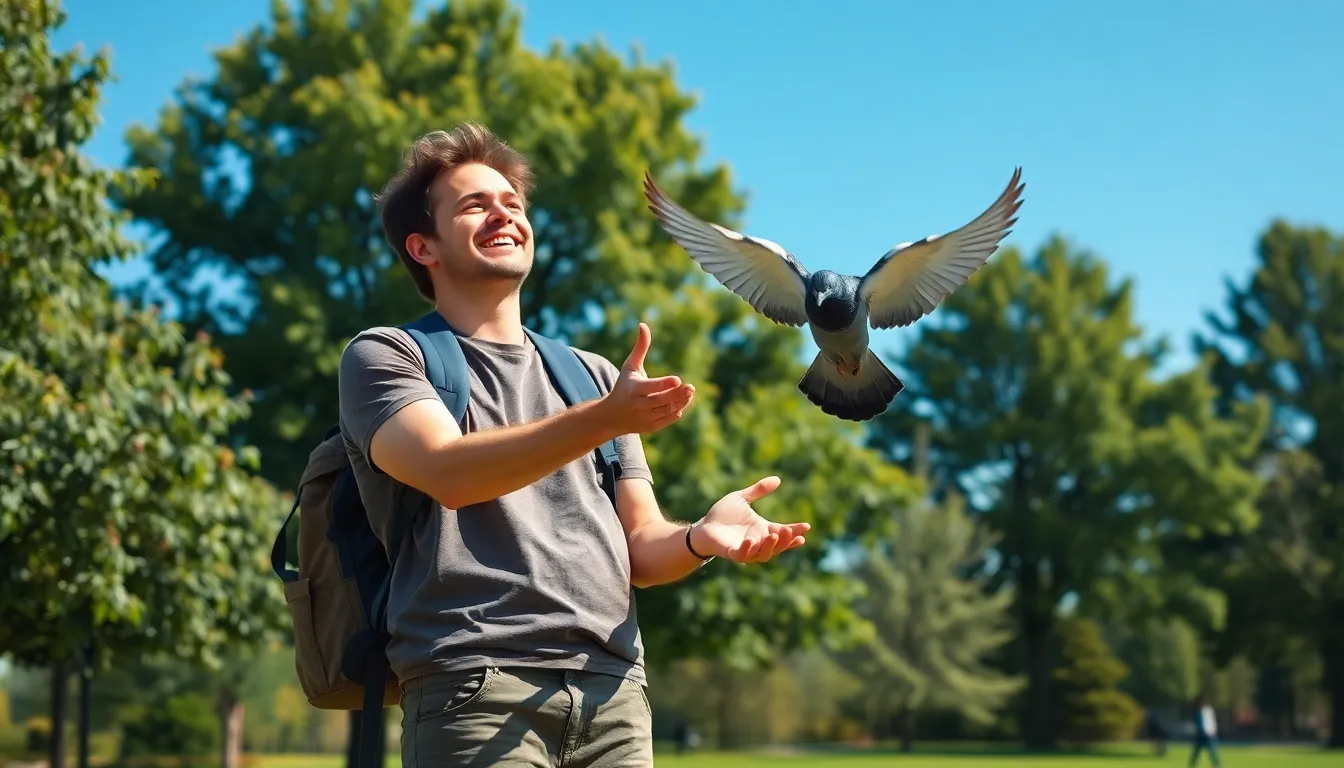In a world dominated by instant messaging and social media, the idea of sending a message via carrier pigeon might seem like a quirky throwback. But let’s be honest—who wouldn’t want to send a message with a feathered friend? Imagine your friends’ faces when a pigeon swoops down with your note, all while you sip coffee like a modern-day wizard.
Carrier pigeons aren’t just for the history books; they’re a fun and unique way to communicate. These amazing birds have been delivering messages for centuries, and they still have a charm that technology just can’t replicate. So why not embrace your inner avian postmaster and give it a try? It’s time to take flight and discover how delivering messages with carrier pigeons can add a dash of adventure to your communication game.
Table of Contents
ToggleOverview Of Carrier Pigeons
Carrier pigeons, also known as homing pigeons, possess an innate ability to return to their home nest over long distances. Breeders have selectively trained these birds for centuries, enhancing their navigational skills. Typically, they can find their way back from distances exceeding 1,000 miles.
These birds hold a distinguished history as messengers. In World War I and World War II, they played vital roles in communication, delivering important messages when other forms of technology failed. Remarkably, their reliability and speed made them invaluable assets in critical situations.
Training involves a systematic approach. It starts with familiarizing the pigeons with their home location. Gradually, trainers release the birds from increasingly distant points. This method reinforces their homing instinct, ensuring they associate their home with food and safety.
Using carrier pigeons for messaging offers unique advantages. Unlike electronic devices, these birds operate without the need for power sources or internet connections. Peaceful and quiet, their deliveries add a rustic charm to communication.
The birds require specific care and environment to thrive. Proper housing, diet, and companionship are essential for their physical and mental well-being. Providing a comfortable loft, nutritious feed, and social interaction contributes to their overall health.
Many enthusiasts appreciate the joy of sending messages this way. Using carrier pigeons invites playful creativity, making each note feel special. It offers an alternative to the hustle of modern technology, encouraging moments of connection in a bustling world.
History Of Message Delivery

Message delivery methods have evolved significantly over time. Early humans utilized signal fires, smoke signals, and drum beats to communicate over distances. Such primitive techniques laid the foundation for more sophisticated systems.
Ancient Methods
In ancient civilizations, message delivery relied heavily on visual signals and sounds. Egyptians developed hieroglyphics to convey messages, while Greeks and Romans used runners for physical delivery. These methods required a keen understanding of geography and timing. Incas mastered quipu, a series of knots on strings, to relay information across their vast empire. Each civilization found innovative ways to enhance communication amidst challenges.
The Rise Of Carrier Pigeons
Carrier pigeons gained prominence during the 19th and 20th centuries. Their impressive navigational abilities made them ideal for delivering messages during conflicts. During the Franco-Prussian War, these birds transported vital information between front lines. Furthermore, both World Wars saw extensive use of pigeons, with many contributing to military success. Their dependability in challenging conditions highlighted their importance. Governments recognized the value of training programs to enhance pigeon messaging capabilities, ensuring timely and accurate delivery.
Advantages Of Using Carrier Pigeons
Carrier pigeons offer distinct benefits that make them an appealing method for message delivery. Their unique qualities stand out in today’s fast-paced communication landscape.
Reliability And Accuracy
Reliability defines carrier pigeons as exceptional messengers. These birds possess a strong instinct to return to their home loft, ensuring they consistently reach their intended destination. An impressive success rate of over 90% in returning home proves the effectiveness of their navigational abilities. Their training enhances accuracy, as the birds learn specific routes and familiar landmarks. Many historical accounts depict carrier pigeons delivering critical messages during wartime, showcasing their trusted role in communication. Factors such as weather conditions and terrain can influence their flight, but their innate skills largely mitigate these risks.
Speed Of Delivery
Speed becomes a notable advantage with carrier pigeons. Typically, these birds can cover distances of up to 600 miles in just one day, showcasing their remarkable endurance. They often travel faster than conventional ground methods, making them a reliable option for urgent messages. In ideal conditions, carrier pigeons can fly at speeds of 50 to 70 miles per hour. Their ability to navigate directly to home lofts allows for quick and efficient delivery, even in the face of obstacles. Additionally, sender and receiver can experience an element of excitement, as the anticipation builds during a pigeon’s journey.
Training Carrier Pigeons
Training carrier pigeons involves a structured approach to establish their homing instincts. Birds must first become familiar with their home location to ensure successful returns.
Basic Training Techniques
Begin training with a proper introduction to their loft. It’s crucial for pigeons to recognize their home as a safe space. Gradually release the pigeons from short distances of 1 to 5 miles. Repeat this process multiple times, increasing the distance over weeks. Consistency in returning to the loft strengthens their instinct. Feeding them with a specific call or whistle reinforces this behavior.
Advanced Training Tips
Enhance training using various landmarks during distance flights. Incorporating visual cues helps pigeons navigate better. Schedule flights during favorable weather to avoid unnecessary challenges. Implementing varied environments allows pigeons to adapt to diverse conditions. Tracking their flight times with a stopwatch helps measure improvements. Finally, introducing them to different trainers improves their responsiveness, ensuring reliable message delivery.
Practical Uses For Carrier Pigeons
Carrier pigeons present various practical applications that extend beyond their historical significance. These birds function effectively in military settings and personal communication.
Military Applications
During wartime, carrier pigeons served as crucial messengers. Their reliability in delivering information often made the difference in military operations. For example, during World War I, they carried vital messages across enemy lines, achieving success rates exceeding 90%. Even with modern technology, some military units utilize pigeons for secure communication. Their ability to navigate treacherous terrains adds strategic advantages during covert missions. Events like the Franco-Prussian War showcased their importance, as armies employed them for gathering intelligence. The use of trained pigeons remains a symbol of resilience, demonstrating how they bridge communication gaps in critical situations.
Personal Communication
In personal communication, carrier pigeons create unique, heartfelt exchanges. Many individuals enjoy sending messages via these birds, adding a nostalgic touch to correspondence. The act of releasing a pigeon can enhance the excitement in delivering information, making it more memorable. Friends and family often find joy in waiting for their feathered counterparts to return with replies. People cherish the idea of sending notes across distances, which fosters a sense of connection in a fast-paced world. Enthusiasts frequently engage in community events that celebrate this quirky method, ensuring that the charm of carrier pigeons persists in modern life.
Embracing carrier pigeons for message delivery brings a delightful twist to communication. This charming method not only fosters creativity but also creates memorable connections in an age dominated by technology. The unique experience of sending and receiving messages through these remarkable birds can reignite a sense of adventure and nostalgia.
By appreciating the history and training behind these feathered messengers, individuals can cultivate a deeper bond with the art of communication. Whether for personal use or as part of community events, the joy of using carrier pigeons offers a refreshing alternative that stands out in today’s fast-paced world.


